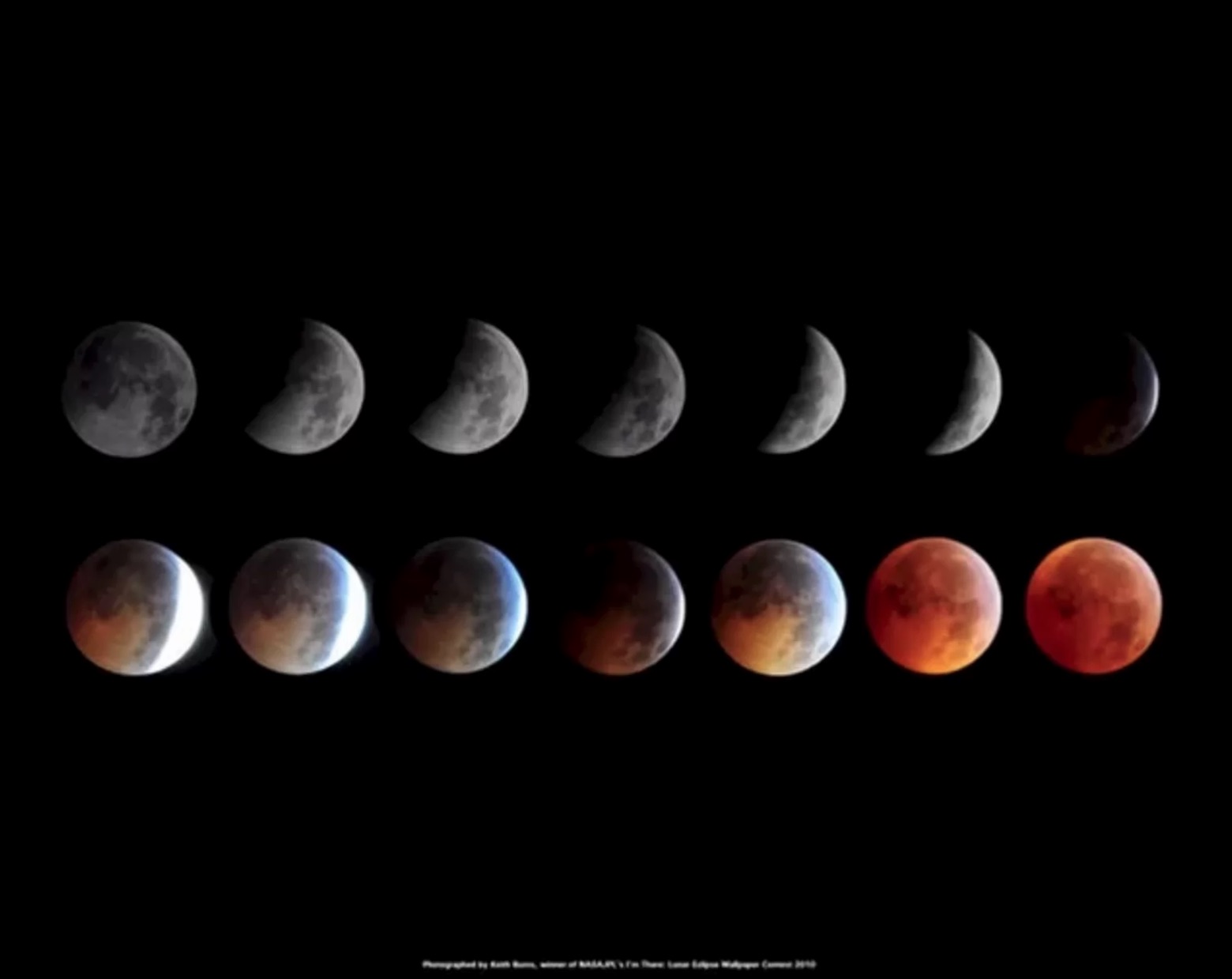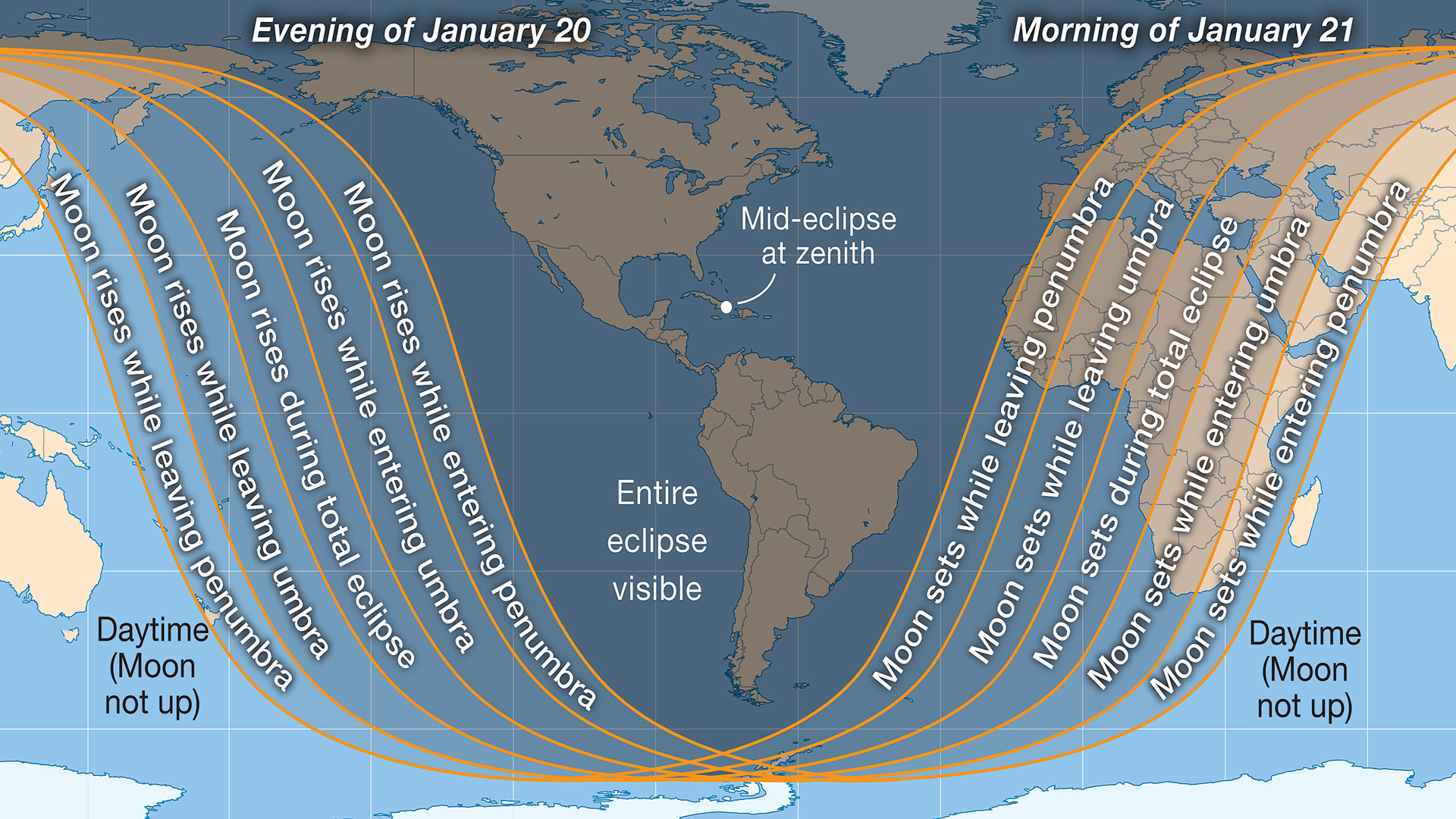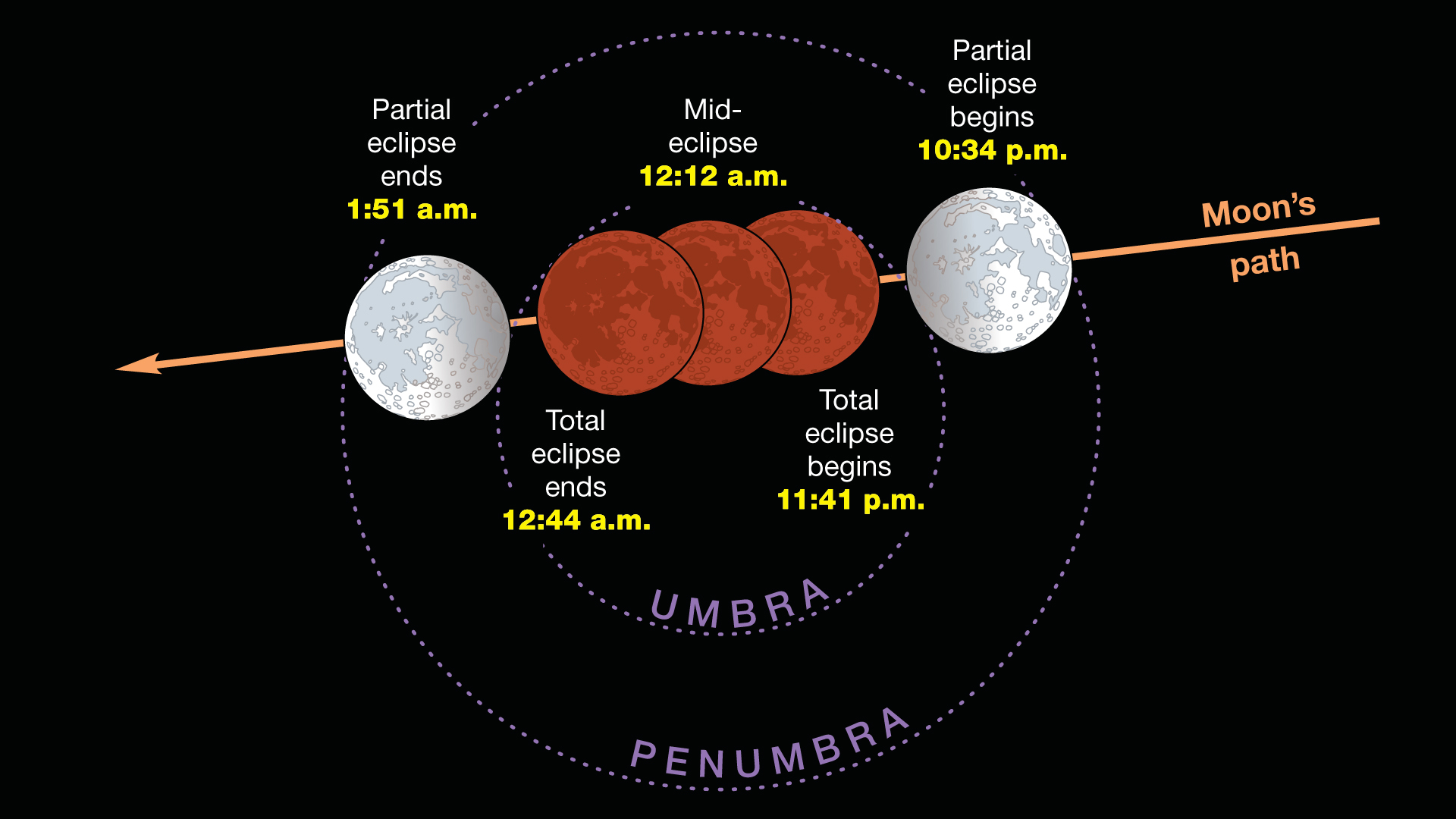Super Blood Wolf Moon Webcasts! How to Watch the 2019 Total Lunar Eclipse Online
Update for 3 a.m. EST, Jan. 21: The total lunar eclipse of 2019 has ended. See our full story here! See more photos here!
Original Story: The total lunar eclipse of January 2019 promises to be a spectacle to behold, and may be visible to millions across North and South America, weather permitting. But if Mother Nature prevents you from seeing the moon marvel, fear not. You can always tune in to the "blood moon" on your favorite digital devices with some free webcasts.
On the night of Jan. 20, beginning just minutes after 10:30 p.m. EST (7:30 p.m. PST), the moon will noticeably, progressively get darker. The sun, the Earth and the moon will converge in an instance of perfect cosmic alignment to create a total lunar eclipse. The online observatory Slooh will host a free webcast on Slooh.com (you can sign up for a free account). We'll simulcast that feed on Space.com's homepage, courtesy of Slooh.
As the sun's rays pass through Earth's atmosphere, the light refracts. Blue light, which is visible during the daytime, gets scattered, and the red shades that accompany sunset and sunrise get cast into space. During the full moon phase, the lunar nearside is completely lit by the sun, because the moon passes over or under Earth's shadow. But occasionally, the moon travels, partially or completely, through the planet's copper-colored shadow, giving skywatchers a special treat. [Super Blood Moon Lunar Eclipse of 2019: A Complete Guide]
If weather, location or mobility concerns prevent you from watching the eclipse directly under a clear sky, don't worry: Plenty of webcasts will broadcast the event.
The online telescope service Slooh will begin its coverageat 10:30 p.m. EST (7:30 p.m. PST). "We stream it live so that people from around the world, no matter their geographical location, can witness this phenomenon together," Slooh's resident astronomer, Paige Godfrey, said in a press statement. (This webcast will also appear on Space.com's homepage.)
Godfrey and Slooh astronomer Paul Cox, plus Slooh storyteller Helen Avery, will discuss the science and cultural impact of lunar eclipses during the webcast.
Breaking space news, the latest updates on rocket launches, skywatching events and more!
The Exploratorium in San Francisco will provide live lunar eclipse Facebook, and this broadcast, like Slooh's, will begin at 10:30 p.m. EST (0330 GMT/7:30 p.m. PST) as the moon moves into the darker region of Earth's shadow, called the umbra. "The Exploratorium will broadcast a telescope view of the moon live from Pier 15 on San Francisco's Embarcadero," museum representatives announced on the Exploratorium website. The museum will be closed during the broadcast.
The Virtual Telescope Project will work with astrophotographers watching the total lunar eclipse from the United States and Panama to deliver a live feed of the stunning event beginning at 10:30 p.m. EST (0330 GMT/7:30 p.m. PST). That project is a celestial-viewing service managed by Italian astronomer Gianluca Masi.
Griffith Observatory in Los Angeles, located on the southern slope of Mount Hollywood, will also broadcast the event here, beginning when the moon rises on the West Coast, at about 8:10 p.m. EST (5:10 p.m. PST).
You can find a global map, interactive material and total lunar eclipse data on TimeandDate.com. The website will feature a livestream of its own, too. Check the Weather Channel app for another livestream, as well.
Editor's note: If you snap an amazing photo of the January 2019 total lunar eclipse that you'd like to share with Space.com and our news partners for a possible story or image gallery, send comments and images in to: spacephotos@space.com.
Follow Doris Elin Salazar on Twitter@salazar_elin. Follow us @Spacedotcom and on Facebook. Original article on Space.com.
Join our Space Forums to keep talking space on the latest missions, night sky and more! And if you have a news tip, correction or comment, let us know at: community@space.com.

Doris is a science journalist and Space.com contributor. She received a B.A. in Sociology and Communications at Fordham University in New York City. Her first work was published in collaboration with London Mining Network, where her love of science writing was born. Her passion for astronomy started as a kid when she helped her sister build a model solar system in the Bronx. She got her first shot at astronomy writing as a Space.com editorial intern and continues to write about all things cosmic for the website. Doris has also written about microscopic plant life for Scientific American’s website and about whale calls for their print magazine. She has also written about ancient humans for Inverse, with stories ranging from how to recreate Pompeii’s cuisine to how to map the Polynesian expansion through genomics. She currently shares her home with two rabbits. Follow her on twitter at @salazar_elin.



